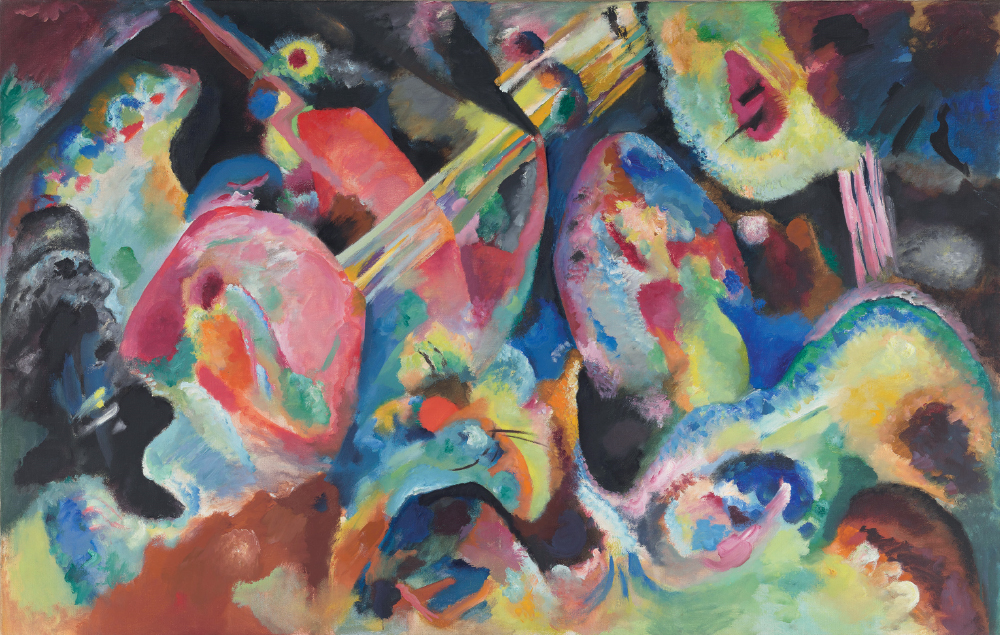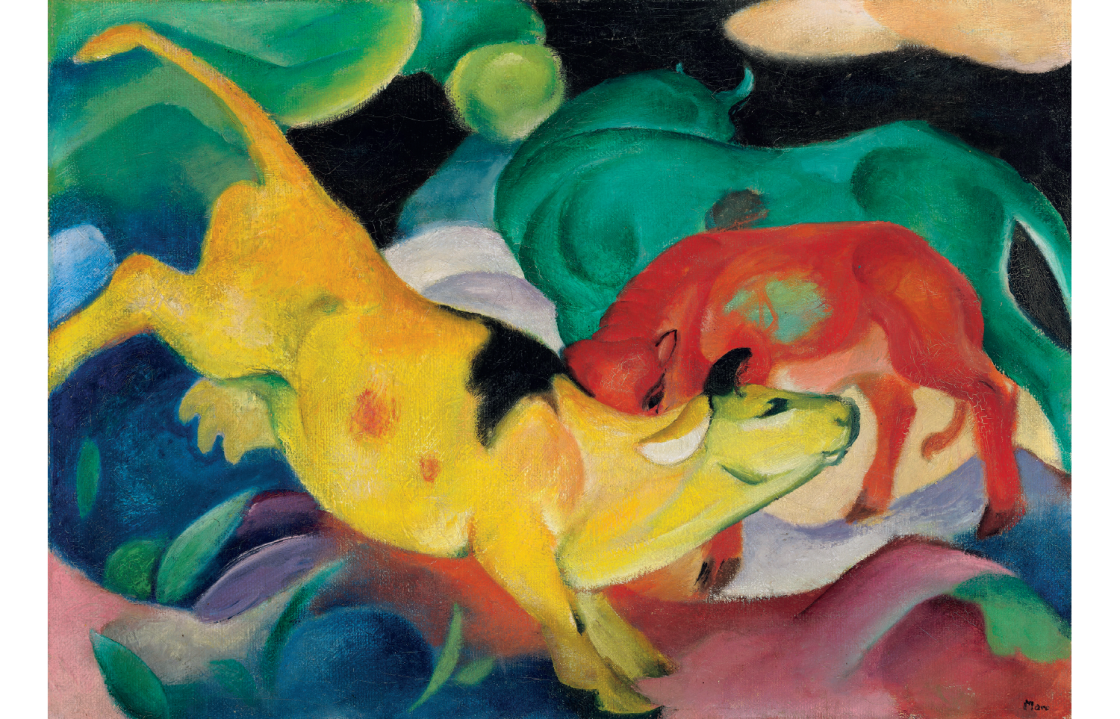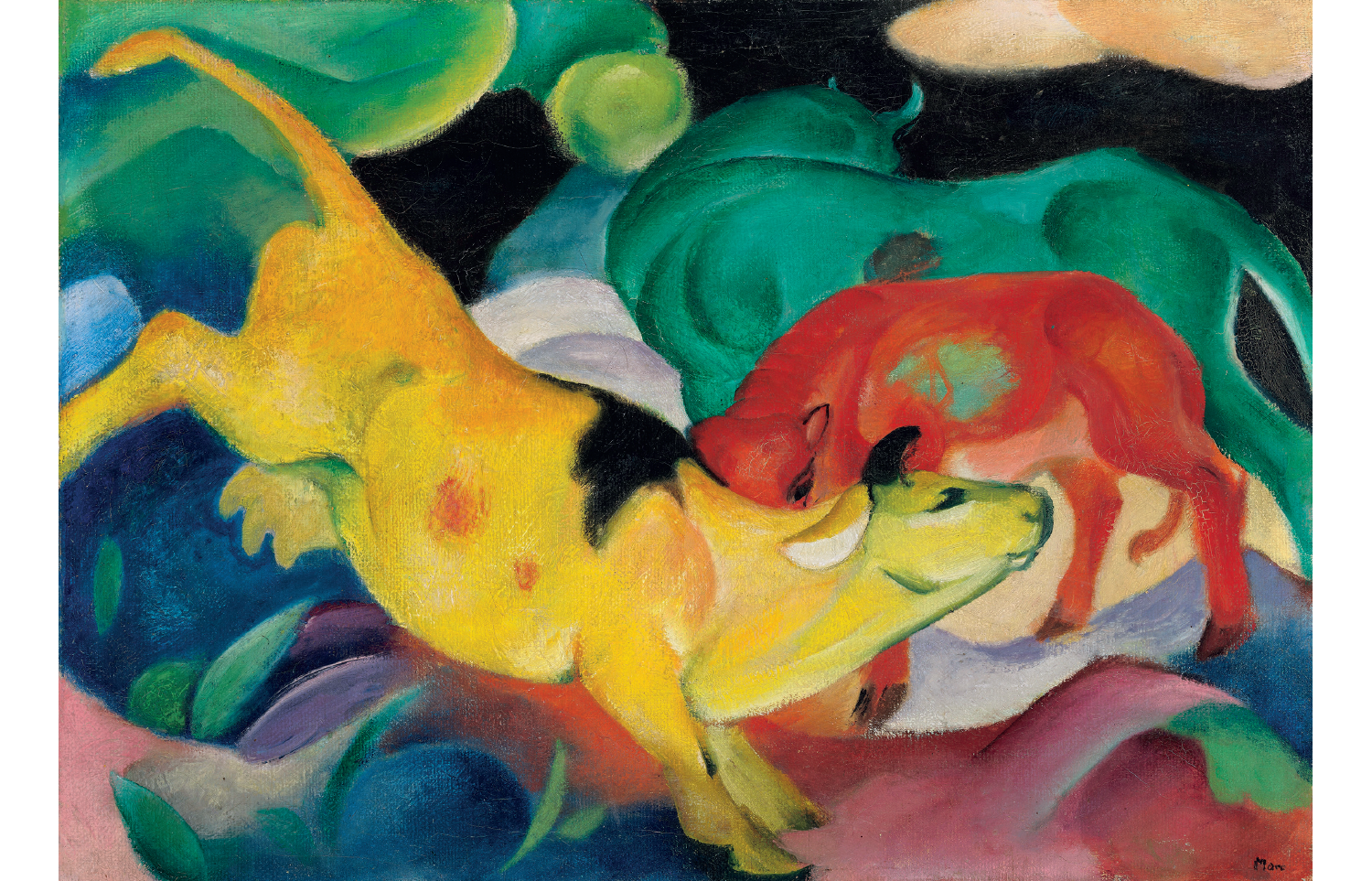‘We invented the name Blaue Reiter whilst sitting around a coffee table in Marc’s garden at Sindelsdorf… we both loved blue, Marc liked horses and I liked riders, so the name came of its own accord.’ Christened so casually by Wassily Kandinsky and Franz Marc in 1911, the Blue Rider was always more of an idea than an art society, but the Tate Modern’s new exhibition – the first in the UK since 1960 – makes it sound more contemporary by describing it as a transnational collective. In practice, as Kandinsky’s partner Gabriele Münter remembered, it was ‘only a group of friends who shared a common passion for painting as a form of self-expression’ – a loose affiliation centred on two figures: Kandinsky, who formulated its philosophy, and Marianne von Werefkin, whose ferocious networking skills got the show on the road.
The spotlight falls on Kandinsky because he outshines the rest
Both had arrived in Munich from Russia in 1896 as mature students to study at Anton Azbe’s progressive art school, Werefkin with her protégé Alexej von Jawlensky in tow. Within a year, this polyglot Russian aristocrat had founded a weekly salon for international artists, writers and musicians; dubbed ‘the Baroness’ (and, less flatteringly, ‘manwoman’), she struck Marc on first acquaintance in 1910 as ‘the soul of the whole operation’.
The soul of the operation, in other words, was Russian. Don’t be misled into thinking this is a German expressionist show: Marc and his partner Maria Franck, August Macke and his wife Elisabeth Erdmann-Macke were German, as was Münter, but the Dresden lot of expressionists, Die Brücke, are absent. Given that Kandinsky gets stick in the catalogue for describing a canvas as being colonised ‘by the imperious brush’, Die Brücke’s brand of appropriated ‘primitivism’ might have been a bridge too far. Still, their inclusion would have added structure to a rather amorphous collection of work.
To ‘spotlight’ 17 associated figures, as the show attempts, is an impossibility; the spotlight inevitably falls on Kandinsky simply because he outshines the rest. Art history would not have forgotten Kandinsky, but his fellow riders and outriders might have slipped its mind without the efforts of the women. It was the wives of Marc and Macke who preserved and catalogued their paintings after their deaths in the first world war, and it was Münter who kept the group’s work together through two world wars and donated it to the Lenbachhaus in Munich, the Tate’s collaborator on this exhibition. The women provided transcription services to the male authors of The Blue Rider Almanac; more importantly, Münter and Werefkin – both wealthy orphans – provided money. When Kandinsky and Münter took a shine to the small Bavarian town of Murnau, where they holidayed in 1908 with Werefkin and Jawlensky, Münter bought a house there.

It was in ‘the Russian house’ in Murnau that the seeds of the Blue Rider philosophy of a spiritual art springing from ‘inner necessity’ were sown. A combination of fresh sub-Alpine air and the local folk art, which Münter collected, freed up and simplified the couple’s painting styles, bringing them closer, Münter felt, to ‘the essence of things’. In Murnau they went native – Kandinsky took to wearing Bavarian hosen, hence the bare knees and legwarmers in Münter’s painting ‘Kandinsky and Erma Bossi at the Table’ (1912). He saw no contradiction between localism and internationalism, since the human spirit knows no borders. He justified the inclusion of a Hokusai woodcut in the Almanac, as ‘we must show that something is happening everywhere’.
What wasn’t happening everywhere was abstraction: that was Kandinsky’s baby, and you can see it take its first steps in this exhibition. A turning point was an Arnold Schönberg concert in Munich in January 1911; blown away by the atonal music, he wrote to the composer that it was ‘precisely what I have been looking for in pictorial form’. From then on, rather than taking a line for a walk, he seems to be pulled along like the owner of a febrile dog that has picked up a scent and is zigzagging in pursuit of it.
Art history might have forgotten Kandinsky’s fellow riders without the efforts of the women
Kandinsky’s spiritual philosophy has been hugely influential on art theory, but it’s debatable how much influence theory has on practice – I suspect that much of it is tacked on to explain what the artist is already doing. Perhaps the inner necessity that drove Kandinsky was simply a drive to creative expression. There are some nice paintings in the show by his fellow riders: Werefkin’s ‘The Skaters’ (1911), Münter’s ‘Dark Still Life (Secret)’ (1911), and Jawlensky’s ‘Spanish Woman’ (1913) – a portrait of the crossdressing dancer Alexander Sacharoff that anticipates the gaudiness of RuPaul’s Drag Race – but few, Marc’s ‘Tiger’ (1912) excepted, jump off the walls as if driven by inner necessity. If you want to see expressionist paintings that do, go to Shani Rhys James’s new exhibition opening at Connaught Brown on 22 May and running until 14 June. Rhys James is not part of a transnational collective – she lives and works in rural Wales – and you won’t see her work at the Tate, but she’s completely contemporary. She’s living now.







Comments